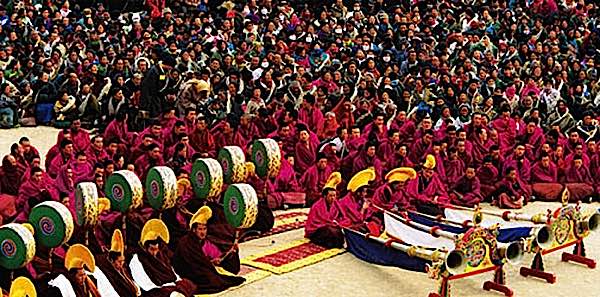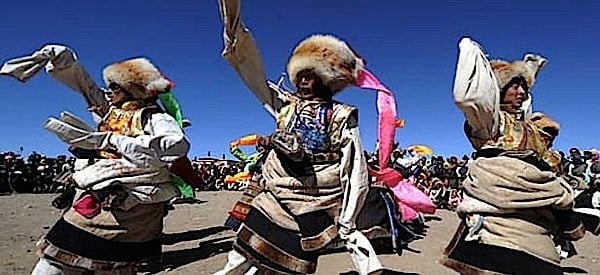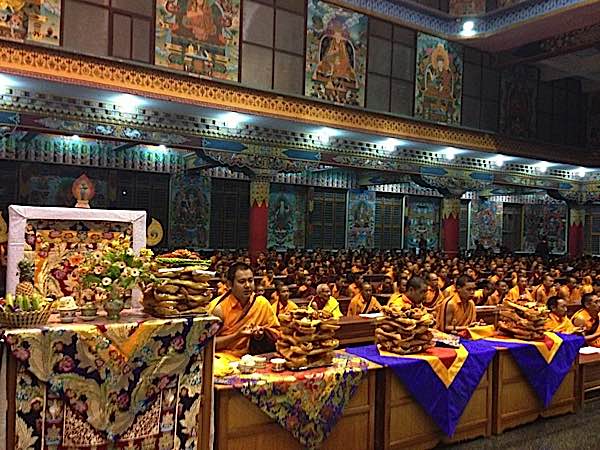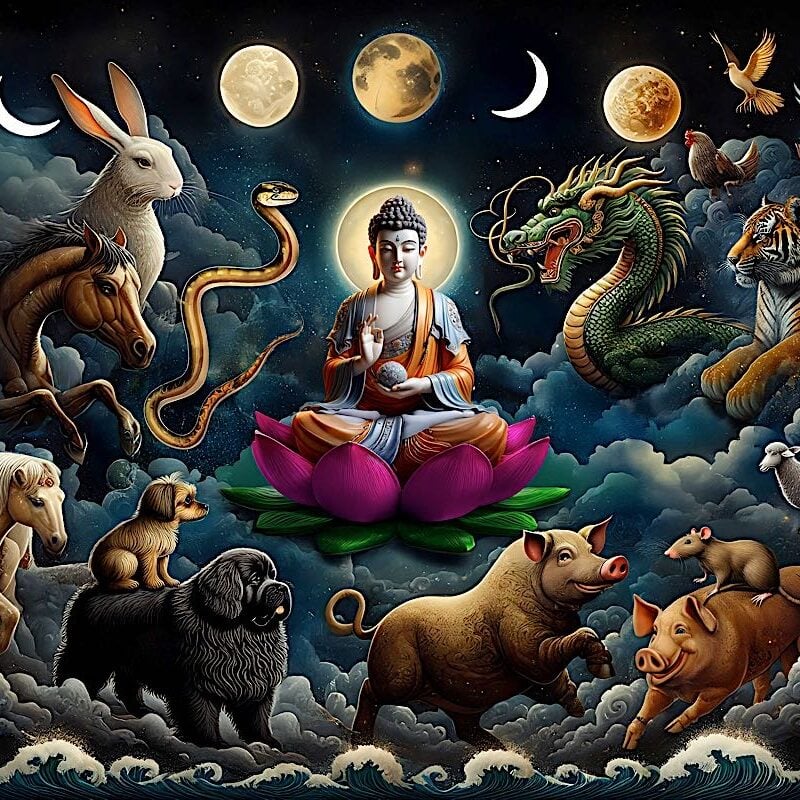Losar 2022: Getting Ready to Bring in the Year of the Tiger March 3, 2022; 15 days before and after Losar
On the Tibetan Lunar Calendar, Losar — New Year! — falls on March 3, 2022 — which is the year 2149 in the Tibetan calendar. Due to differences in the lunar calendars [note below] the Tibetan calendar is almost 30 days later than the lunar New Year celebrated in some other areas.
15 Days Before New Years
Preparing for the actual day is often more involved than the celebrations! (For preparations, see below.)
Running up to New Year, Tibetan Buddhists especially, undertake purification practices, especially Vajrasattva and other practices in the last 5 days of the old year — that help us remove obstacles, negative karmas, and situations going into the New Year.

15 Days After New Years
After New Year is equally vital, as these are sacred days — Day 1 to 15 of 2022 (March 3-18) celebrate “Shakyamuni Buddha’s 15 Days of Miracles (one miracle per day) ending on the “Day of Miracles” on March 18. These are vitally important “Buddha Days” for Dharma practitioners, especially for creating auspicious merit.
- 15 Days of Miracles feature, with all 15 miracles of Buddha!>> which starts on March 3 and culminates on March 18!
- Note: For the differences in the lunar calculation and how it impacts celebrations and Dharma dates, see this feature>>

Before the New Year
Traditionally, celebrants will prepare for Losar by
- Cleaning their houses (sweeping away the misfortunes of the previous year.)
- Buddhist monasteries and gompas will perform rituals on this last day, the famous mask dances, which symbolically drive away the negative forces of the old year.
- Traditionally, a person should not clean their house for the first few days of Losar to symbolically preserve the luck.
- Serious Buddhists might spend the last five or more days on purification practices such as Vajrasattva and Vajrakilaya. There will often be protector pujas, for example to Palden Lhamo, the great protectress of Tibet and the Dalai Lama. [More about Palden Lhamo here>>]

New Years Celebrations — Bringing in the Luck of the Water Tiger!
If you are fortunate enough to be in an area with a Tibetan temple or Gompa, there are likely colorful and beautiful celebrations planned — although this year they will likely be streamed or remote events. To help bring in the luck of 2022, the Year of the Water Tiger consider attending and supporting the temple online with a significant donation for merit (good karma).
These events might include “pujas” and ceremonies but are also as likely to include festive performances.
Video from Tibetan Heart Beat for Losar 2017, Best of Amdo Losar Celebrations:
Losar at Home
Traditionally, you decorate your doors and windows to bring home the auspiciousness of the year. Often these decorations are purpose-made with good luck, good fortune, happiness and long life messages. Consider having a festive dinner. The “first meal of the day” should go to the Buddhas, Bodhisattvas and deities. Before eating breakfast, typically you should make your offerings on your home shrine.

The First Three Days
The first three days of Losar are the most important. The first day is usually for immediate family, the second day for visiting friends and relatives, the third day is for prayers and giving (donating to monks, nuns, or temples.)
Not only do you get to party, but you are also encouraging the good fortune and merit for 2022! One important tradition includes hanging new prayer flags, Wind Horse flags, which carry the good wishes to all corners of the earth on the winds.

Early in the morning, at home we might give our offerings on our personal shrines. When first greeting people, the most common greeting is “Tashi Delek” which basically wishes them good fortune and happiness. The first day of Losar is usually for immediate family. If you are fortunate to be near a temple or Gompa, join the festivities if there are any this day (it may be scheduled for the weekends or other days).

The second day of Losar is gyal-po losar (King’s Losar) and tends to be more secular in nature. Throughout these first few days, people might visit friends and families, wishing them well, and enjoying food and feasts. Of course, it’s a time for dancing, partying and entertainment. Displaying the eight auspicious signs of the Buddha is a good way to bring auspiciousness home (either printed out from your laser printer and hung up, or more elaborate displays).

For traditional Tibetans, the third day is the day for visiting monasteries and gompas and making prayers. This is the time to show generosity, to create merit in the year by donating food, clothing and money to the Lamas, Gurus, monks, and nuns. The third day will be heavy with incense smoke, especially Juniper leaves.
Tashi Delek from your friends at Buddha Weekly!

More articles by this author

Offering Light for Saga Dawa Duchen and the Month of Merits: Buddha’s Birthday, Enlightenment and Paranirvana 100 Million Merit Day

Who is my Enlightened Life Protector Based on Tibetan Animal Sign Zodiac in Buddhism? According to Mewa, Mahayana tradition and Kalachakra-based astrology (with Mantra Videos!)

Bodhisattva Vow and the Bonding Aspiration of the 5 Buddha Families: Reversing Dharma Downfalls, Purifying Karma, and Restoring Commitments
Search
Latest Features
Please support the "Spread the Dharma" mission as one of our heroic Dharma Supporting Members, or with a one-time donation.
Please Help Support the “Spread the Dharma” Mission!

Be a part of the noble mission as a supporting member or a patron, or a volunteer contributor of content.
The power of Dharma to help sentient beings, in part, lies in ensuring access to Buddha’s precious Dharma — the mission of Buddha Weekly. We can’t do it without you!
A non-profit association since 2007, Buddha Weekly published many feature articles, videos, and, podcasts. Please consider supporting the mission to preserve and “Spread the Dharma." Your support as either a patron or a supporting member helps defray the high costs of producing quality Dharma content. Thank you! Learn more here, or become one of our super karma heroes on Patreon.
Lee Kane
Author | Buddha Weekly
Lee Kane is the editor of Buddha Weekly, since 2007. His main focuses as a writer are mindfulness techniques, meditation, Dharma and Sutra commentaries, Buddhist practices, international perspectives and traditions, Vajrayana, Mahayana, Zen. He also covers various events.
Lee also contributes as a writer to various other online magazines and blogs.















